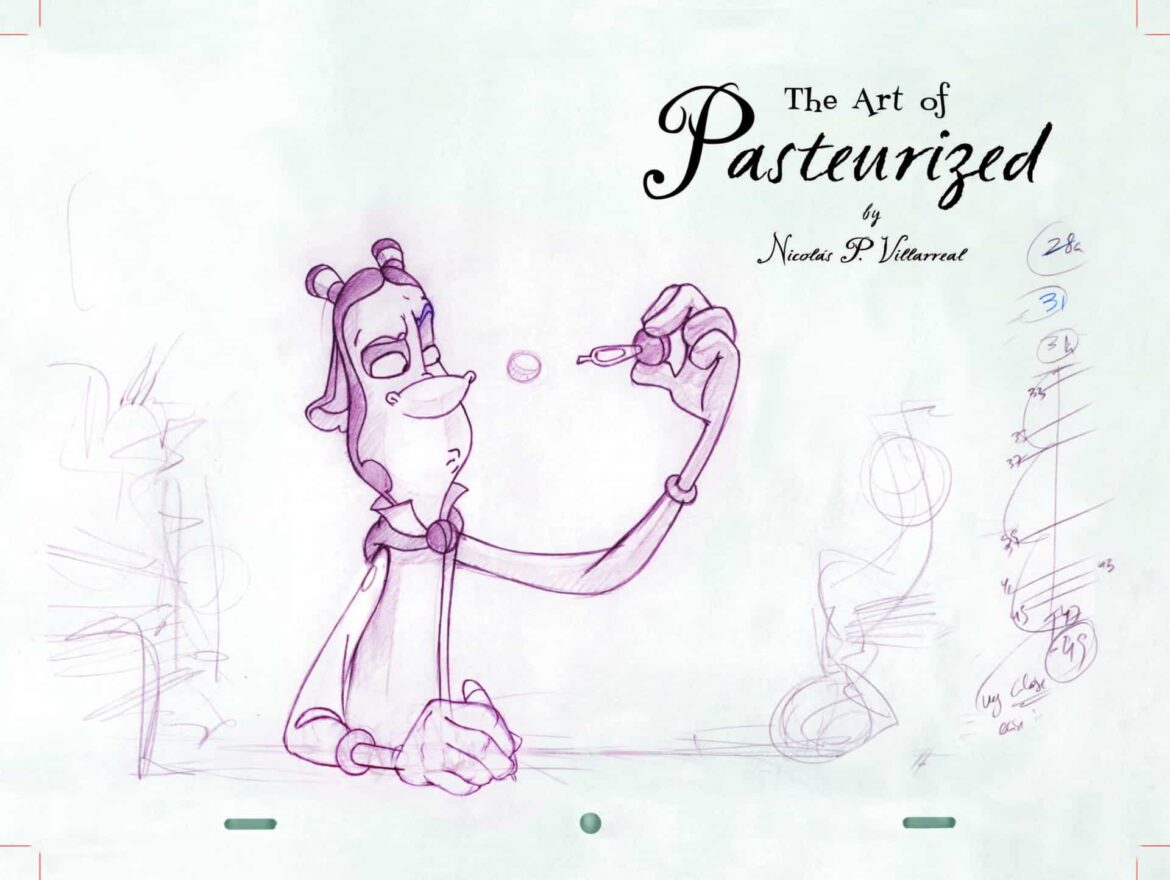By Greta Chiocchetti
This past spring, Director of the School of Visual Development and 2-D Animation Nicolás Villarreal shared his creative journey and fundamental tips to help aspiring animators achieve their career dreams during the “Character Design Fundamentals in 2-D Animation: Tips from the Top” workshop.
Villarreal is the co-founder of Red Clover Studios and has worked with top animation studios like Walt Disney Studios, Sony Interactive Entertainment, Jim Henson Studios, Sega, and Amazon Studios. Before this, Villarreal was a child who loved to draw. Over Zoom, the Academy director traced the progression of his illustrative career—starting with his humble beginnings.
The presentation began with Villarreal sharing some of his earliest drawings, including a charming rendition of an octopus riding a scooter done at age eight, to illustrate how the fundamentals of graphic shapes can be understood by even the youngest among us. “Those shapes mean something,” Villarreal said. “Look at how the octopus is moving forward; that’s a line of action showing speed.”
“These shapes affect the perception of the audience. When you place the shapes in characters, you’re sending a psychological message,” Villarreal said. “And it’s important to know the shapes because you’re basing them on the profile of the character.”
Villarreal went on to describe a life-changing moment during a family vacation to Disneyland, where he asked a Disney animator how he could someday land their job.
“He told me, ‘First of all, study art and drawing as much as you can. This is crucial,’” said Villarreal. “And he gave me a list of schools—which to my knowledge are the best ones in the United States and the world—which included Art Center College of Design, CalArts, RISD, and Pratt, along with, of course, the Academy.”
Villarreal selected the Academy, not only because it had the strongest program in animation and drawing, but also because of its San Francisco location—and the city’s proximity to Pixar, Industrial Light & Magic, and Disney. Villarreal graduated with a strong portfolio and skillset in 2002, but after a series of crushing rejections from top studios, he learned that he would need to be persistent to reach his goals.
“There’s a book by Randy Pausch called ‘The Last Lecture,’ and there’s this quote that I love: ‘The brick walls are there for a reason. The brick walls are not there to keep us out; the brick walls are there to give us a chance to show how badly we want something,’” said Villarreal. “‘The brick walls are there to stop the people who don’t want it badly enough. They are there to stop the other people!’”
In 2006, after a summer of intensive drawing at the Academy, Villarreal landed a job as a character animator for Disney’s “Tinker Bell.” He referenced characters he designed during his time there as examples of graphic shapes, beginning with Tinker Bell’s nemesis.
“In terms of design, she was much more angular. If you look at the color wheel, red-violet and blue-violet are exactly opposite of yellow-green and yellow-orange, so you know that character was going to be in conflict [with Tinker Bell],” explained Villarreal.
In the second half of his workshop, Villarreal showed examples of his Academy training in practice, starting with a demo of his animation and sketching processes, including some valuable insight into the psychology behind character design.
“If I show you a circle, a triangle, and a square, you need to see which is the good guy, the bad guy, and the strong guy,” said Villarreal, explaining that round shapes typically signify endearment and goodness, while more angular shapes connote villainous characters. Rectangles, he commented, indicate strength and fortitude. He screened his award-winning animated short, “Pasteurized,” to illustrate this pattern.
As he walked attendees through the process of animating on TVPaint Animation, a popular 2-D paint and digital animation software, Villarreal offered some words of encouragement.
“I know it’s a cliché, but if you love it, just keep going forward,” said Villarreal. “There are going to be times full of uncertainty or hesitation, but you need to find that driving force to just keep going forward.”
Watch the full “Character Design Fundamentals in 2-D Animation: Tips from the Top” workshop below.
